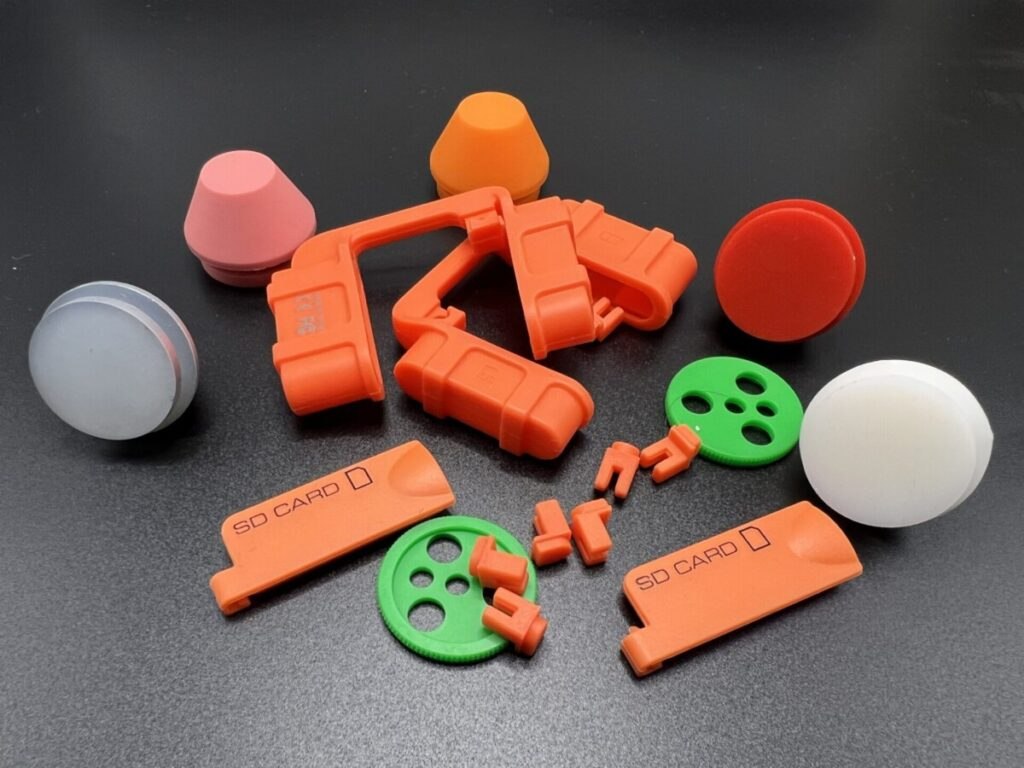When it comes to choosing the right elastomer for industrial, automotive, medical, or consumer applications, manufacturers often compare silicone rubber with other common materials such as EPDM, NBR, and neoprene. While each material has its own strengths, silicone rubber consistently proves to be the most versatile, durable, and high-performing choice across industries.
In this blog, we’ll explain the differences between these materials and why silicone rubber parts are the preferred option for demanding applications.
Understanding the Materials
Before comparing performance, let’s define the most widely used elastomers:
Neoprene (Polychloroprene Rubber) – Known for good weather resistance and moderate oil resistance, often used in protective gear and gaskets.
Silicone Rubber – A synthetic elastomer known for its extreme temperature resistance, flexibility, and long-term durability.
EPDM (Ethylene Propylene Diene Monomer) – A cost-effective synthetic rubber, commonly used for weather sealing and insulation.
NBR (Nitrile Butadiene Rubber) – Resistant to oils and fuels, widely used in automotive seals, O-rings, and hoses.
Key Comparison: Silicone vs. EPDM, NBR, and Neoprene
| Property | Silicone Rubber | EPDM | NBR | Neoprene |
|---|
| Temperature Resistance | -60°C to +230°C | -50°C to +120°C | -40°C to +120°C | -35°C to +120°C |
| 灵活性 | Excellent (remains elastic over time) | Good | Fair | Fair |
| Weather & UV Resistance | Excellent | Excellent | Poor | Good |
| Chemical Resistance | Excellent against water, oils, and many chemicals | Limited | Excellent against oils/fuels, poor against weather | Moderate |
| Biocompatibility | Medical- and food-grade available | No | No | No |
| Longevity | Extremely long-lasting | Moderate | Moderate | Moderate |
Why Silicone Rubber Outperforms
Superior Temperature Resistance
Unlike EPDM, NBR, or neoprene, silicone can function reliably in extreme hot and cold conditions. This makes it ideal for automotive engines, aerospace equipment, and industrial machinery.
Long-Term Flexibility
Silicone rubber remains soft, elastic, and crack-resistant even after years of use. Other rubbers tend to harden or become brittle over time.
Weather and UV Protection
EPDM performs well outdoors, but silicone goes further—it withstands UV radiation, ozone, rain, and sunlight without degrading. Neoprene and NBR struggle with long-term outdoor exposure.
Chemical and Oil Resistance
While NBR is best known for oil resistance, silicone rubber also offers excellent protection against water, many oils, and chemicals, making it suitable for seals, gaskets, and protective parts in multiple industries.
Biocompatibility for Medical and Food Applications
Silicone rubber can be produced in medical- and food-grade formulations, which is not possible with EPDM, NBR, or neoprene. This makes it the safest choice for healthcare devices, food contact products, and wearables.
Longer Service Life = Cost-Effectiveness
Although silicone rubber may have a slightly higher initial cost, its extended durability and reduced maintenance needs make it the most cost-effective solution in the long run.
Industry Applications of Silicone Rubber
Because of its superior properties, silicone rubber is widely used across industries where other materials fall short:
- Automotive & Aerospace – Engine seals, gaskets, hoses, vibration dampers.
- Electronics – Keypads, switches, waterproof enclosures, protective covers.
- Medical & Healthcare – Tubing, medical-grade seals, wearable device parts.
- Industrial – High-temperature seals, chemical-resistant gaskets, vibration isolators.
- Consumer Products – Kitchenware, protective cases, waterproofing components.
When to Choose Silicone Rubber Over EPDM, NBR, or Neoprene
Choose silicone rubber if your project requires:
- High or low temperature performance.
- Outdoor/weatherproof applications.
- Long-term durability with minimal replacement.
- Biocompatible, food-safe, or medical-grade components.
- Flexible design customization (color, hardness, finish).
Conclusion
While EPDM, NBR, and neoprene each have their uses, silicone rubber consistently outperforms them in terms of temperature range, durability, weather resistance, and versatility. For manufacturers looking to enhance product reliability and reduce long-term costs, silicone rubber parts are the clear winner.
At Luen Fung, we specialize in producing custom silicone rubber parts tailored to your exact requirements. Whether you need seals, gaskets, keypads, or protective components, our team delivers solutions that last.
👉 Contact us today to discuss your silicone rubber project.silicone rubber vs EPDM, silicone vs NBR, silicone vs neoprene, silicone rubber parts, silicone rubber performance
